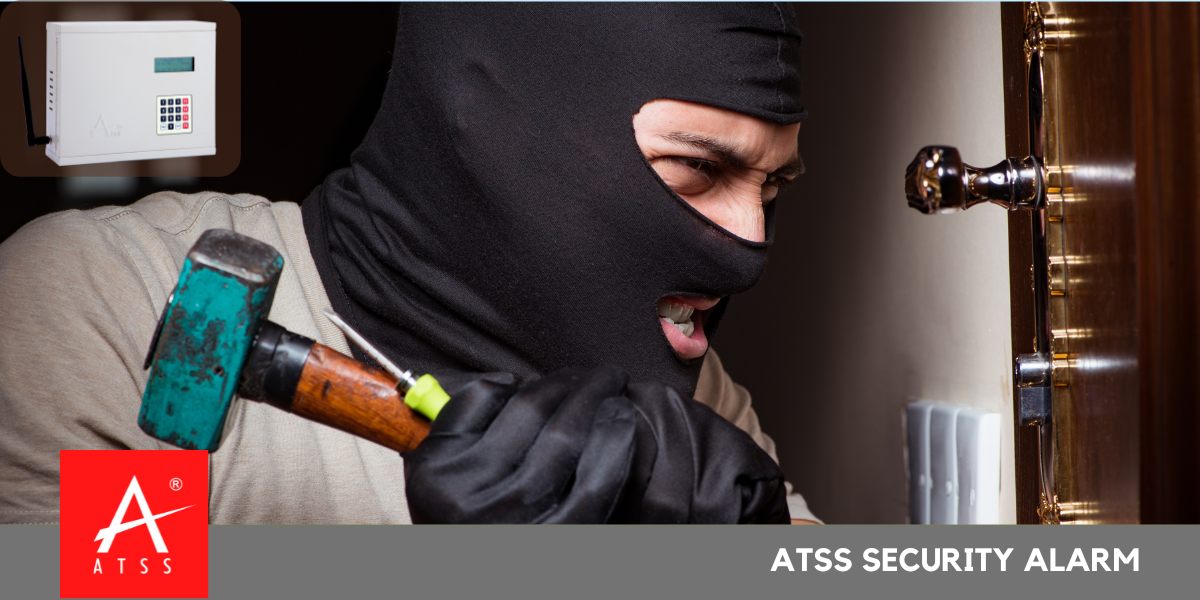
Security Alarm
ATSS Security Alarm
ATSS Security Alarm is one of the most reliable and best burglar alarms system available in the market. Our security alarm system is easy to install and has a very low false alarm rate. We offer different packages for our customers to suit their needs. Contact us for more information!
CENTRAL CONTROL UNIT
ATSS Security Alarm Control panels are available in the market range from the small compact type which incorporates a hooter/siren and can accommodate a few different types of Sensors (detectors) to a more advanced type which can perform more complex functions like automatic dialing to a phone, cellular phone and convey a pre-recorded message informing about the intrusion, in addition to or in place of, local audio-visual alarm. The advanced versions also have the capability of functioning with user codes for arming and disarming and of switching over to a built-in power supply in case of power failure. Many control units also use a remote (infrared or Radio Frequency based) for arming or disarming of the control unit.
For larger installations that have more sensors, there is the provision of Zones. Each Zone is associated with one or more sensors e.g. one floor could be controlled by one Zone. The advantage of Different types of Zones is that when the alarm goes off (alarm sounds), the control panel gives an indication as to which Zone has been compromised. This way one has to only check the sensors linked to that particular zone to see where the problem is.
Please note that many times the sensor, control unit & alarms unit may be combined in a single housing for reducing cost or to provide easy localized, protection. However, larger systems involving multiple sensors will invariably have a separate control unit.
ATSS Security Alarm control panel is the brain of your security system. It is typically placed in an area that is out of the way like a basement, attic, closet, or office. The motherboard and additional components such as radio receivers, backup power supply, and zone expanders are inside this metal box which is often locked. You will have little or no interface with the alarm control. Your alarm technician will need to access this unit to program it and wire it to general standards, or your custom standards.
ARMING / DISARMING SYSTEM
Arming in a loose sense is switching on the system and disarming is disabling (switching off) the system. These functions can be performed using a simple switch or by using a keypad in which the user is supposed to enter a password.
In advanced systems, this may be done by a (Radio Frequency) RF remote or an Infrared remote. In cost-effective systems, this is done using a traditional key that operates an electric switch. Such key-based systems are convenient for use by all age groups and offer more flexibility in terms of an increasing number of authorized users. Some of the systems also have a keypad in which the owner is supposed to enter the correct password to do any arming/disarming.
The infrared remote requires that the operator of the remote be in visual line of sight of the receiver that is on the control panel, whereas the Radio Frequency remote can operate the control panel from anywhere (as long as the receiver is in the range) In addition to arming/disarming the control can support many other functions which may not be available (or even desired) in every control panel.
POWER BACK-UP
All ATSS Security Alarm controls should be equipped with sufficient battery standby to operate the system for the maximum duration of outages you are likely to experience in your area. Do remember that the chargeable battery deteriorates with time. The life of a chargeable battery is normally half after one year of usage and requires replacement after 18 months. The amount of batteries needed depends upon the type and amount of devices used and how long you want the system to function without normal electrical power.
SECURITY ALARM : ZONES
A zone, in general terms, represents an area or collection of sensors that protect an area. Zones allow one to pinpoint the area from where the alarm got initiated, otherwise one has to use guesswork & check all doors & windows for intrusion. In large premises, such a feature is very desirable, though it increases the cost. Make sure that your Central Control Panel can be expanded (or has built-in flexibility) to meet your future needs or you may be faced with replacing the control Panel when you want to add devices.
Let’s look at a typical zone layout for a control panel so that you can understand the way it is wired and programmed works.
ZONE 1 – (DELAY):
This zone is where the doors from which most often enter and exit are. When you turn your alarm on, the exit delay will start a timer (programmed to your specifications, if requested) allowing you time to get out. Once the exit time has expired, (usually about 30-60 seconds.) the alarm will be in the on or “armed” condition.
When you return to your home or business and enter through the delay doors, an entry timer begins. This timer is usually set at about 15-30 seconds. You do not want to have a long entry time as a burglar entering through a delay zone has the same amount of time in your protected area before the alarm goes off. During this time you would go to the nearest keypad and enter your code to turn your alarm off.
In the Know!
The doors have a chime feature that can easily be turned on or off. Most people elect to leave this feature on all this time so that they can hear a tone when the alarm is off and someone enters.
ZONE 2 – (INSTANT PERIMETER) :
This zone would be for other than delay doors. The backyard door and the master bedroom to deck doors and good examples of these types of doors. There is no delay time timer on these doors and when the alarm is on and entry is made the alarm will go off instantly.
ZONE 3 – (INTERIOR) :
This zone is for your motion detector on the main floor. When you enter through a delayed door the motion will delay also, giving you the ability to get to the keypad to turn off or “disarm” your system. If you do not enter through a delay door first and the motion sees you it will go into an alarm condition instantly. When you are staying home or arming your business system without leaving, you can arm your interior zone or zones allowing you to move around without restrictions while still having your perimeter secured.
ZONE 4 – (INTERIOR):
This zone is for your windows if your house is on Ground Floor and for the customers who are asking selectively arm or disarm certain doors/windows to protect the particular zone specifically.
TYPES OF ZONES
Zones fall into various categories depending upon the kind of response desired e.g. medical, burglary, and panic. Each type of device could have a specific activation, alarm, and response procedure. Some examples of the zone are: Hold-up zones can be audible or silent but are always active. You may choose either or both. Audible hold-ups can be used to “scare’ away prowlers but care must always be exercised when activating hold-up devices since there is no way of predicting the action an intruder may take when he hears the alarm or when the police arrive. By connecting to an Auto Dialer the control panel can ‘silently’ call for help.
Burglary devices fall into various categories, 24-hour (always active), main entry door, interior (motion detectors), etc. While going away, you will like to monitor the premises on 24 hours basis. Whereas, if you are at home, you might like to arm (activate) the external doors & windows but not PIR which monitors the interior. You may also want to selectively arm or disarm certain doors/windows.
INFORMATION INPUT
Advanced control panels have displays that may be LCD (liquid crystal display) based or simple LED lights. They can prompt you for the required data, such as Enter Code when the system is activated, and provide a clear visual indication of the system status. Some systems also give audible beeps depending on if the input has been accepted by the system or not.
Most of the systems have built-in checks to verify the authenticity of the person entering inputs. The key-pad-based system requires the user to enter the correct password to perform any function. By giving the password to near & dear ones, the need to have multiple keys is not this. Also, key protection & control could be a problem in case there are many authorized ‘individuals’.
OUTPUTS
All central control panels have some form of output or another. Most of them activate an internal and/or external hooter. Some can also be equipped with relays that can be controlled from the Control Panel itself. These relays can allow you to perform many functions such as AC/Heater control or as a means of interfacing with a home automation system.
The output of the control panel may be given to a Help intimation device such as a Telephone Auto Dialer.
INTRUDER ALARM ACCESSORIES
For a complete protection system, it is important to assess the threat level and then carefully choose various sensors and accessories, keeping in mind the cost and utility. While for a smaller installation it is feasible to do the selection on a ‘do-it-yourself’ basis, however for larger installations, it is advisable to take professional help. Using expert advice, you might actually be able to get a better system at a lower cost.
ATSS Blog: Home Security Systems

